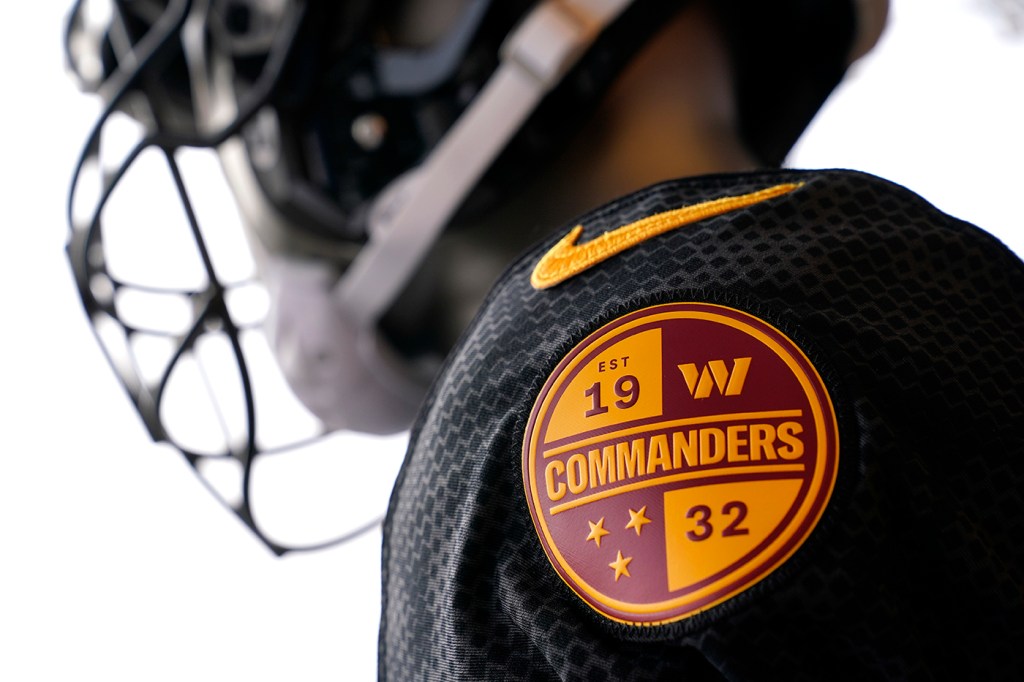Washington’s NFL team unveiled a top-to-bottom makeover. Will it translate into on-field success?

A major rebrand such as the one launched this week by Washington’s pro football team may trigger big sales of jerseys and caps in the short term, but not all image makeovers wow customers, and some fizzle out before they get started, says a Northeastern marketing expert.
“The Gap logo rebrand lasted six days,” says Paul Fombelle of the clothing retailer’s redesign in October 2010. “Gap didn’t do any research about what that logo meant to their most loyal customers. Some people think, ‘It’s just a logo,’ but it got quite the backlash.”
A logo is much more than a crest or badge, “it’s a company’s most valuable asset,” he says. “Everything else—technology, product, store location—can be copied, emulated, or reverse-engineered. But you can’t copy a brand no matter how much companies try. Look at the Apple logo. There’s only one.”

Marketing professor Paul Fombelle says the new Commanders name and logo may draw fan interest in the early going, but success comes down to the old adage — nothing beats winning. Matthew Modoono/Northeastern University
Once a company has launched a brand, it solidifies who it is and what it stands for, and it is difficult—even daunting—to shake that loose in customers’ minds, he adds.
Fombelle’s expertise is in service marketing, which differs from product marketing.
“Most business school courses are taught from a product-dominant, old-school logic—we build a box, and we sell the box. But most of our economy is service-based. There’s no physical product per se.”
Before he joined Northeastern’s faculty as an associate professor of marketing, Fombelle worked at global advertising giant Ogilvy and Mather, whose clients included American Express, IBM, and Miller Lite—“Big brands that knew who they were and had no need to change. Their marketing campaigns changed each year, but their identities didn’t.”
He points to the disconnect in Buick’s attempts to project a cool, hip image by running ads with Tiger Woods.
“Young adults have been rejecting that image flat-out for 20 years,” he says. “My class of young undergrads and MBAs certainly don’t buy into it. Buick is still an old-person brand.”
Not all organizations re-do their images for the same reason. For some, it could be to juice sales, attract new customers, or shed an image that was no longer in keeping with the times.
In the case of the newly renamed Washington Commanders, it was largely driven to turn the page on a name—Redskins—and a helmet logo depicting an Indian, that was widely considered as an affront to Native Americans.
“Racist mascots increase negative stereotyping of Native people, and creates the false perception of Native people as aggressive,” says the Oklahoma-based nonprofit IllumiNative.
Other people saw no reason to change anything.
The team’s new identity now shares the same name as President Joe Biden’s German shepherd, whom he acquired in December.
Washington’s new helmet logo is a gold “W,” and the team retained the same burgundy and gold uniform color scheme it has used for decades. A solid black uniform with gold numbers and an all-white uniform with red numbers were also added.
“It took too long—far too long—for the National Football League franchise to recognize how deeply offensive, inappropriate and ultimately divisive its former name was,” wrote the Washington Post’s editorial board.
“Only after investors and sponsors, reacting to calls for racial justice in the wake of the murder of George Floyd in 2020, threatened to pull financial support did [team owner Daniel] Snyder reluctantly acknowledge the need to retire the name that had been used for 87 years.”
It took about two years for the team to unveil its new look after dropping the old moniker and temporarily calling itself the Washington Football Team. Northeastern’s Fombelle says that what appeared to be an overly drawn-out rebrand was actually due to box-checking.
“There were a lot of legal reasons why they waited,” he says. “They had to make sure they locked down on the copyrights and other things. It was wise for them to stay as The Washington Football Team for that extra time.”
Snyder, the team’s owner, was an advertising executive before he bought the franchise in 1999 for $800 million. It is now worth $3.5 billion, good for eighth place on Forbes 2020 ranking of the NFL’s 32 most valuable teams.
Washington won three Super Bowls before Snyder’s purchase, but have not won any since then. Regular season attendance at home games has slipped after a string of subpar seasons. Former employees of the team recently accused Snyder of fostering a hostile workplace, charges that he denies.
Whether the makeover will be enough to win over fans remains to be seen, says Fombelle. Success in professional sports remains defined by one thing—winning.
“The new name may put a few more butts in the seats early on, but it’ll be a blip in the data if they don’t put some points on the scoreboard.”
For media inquiries, please contact media@northeastern.edu.





